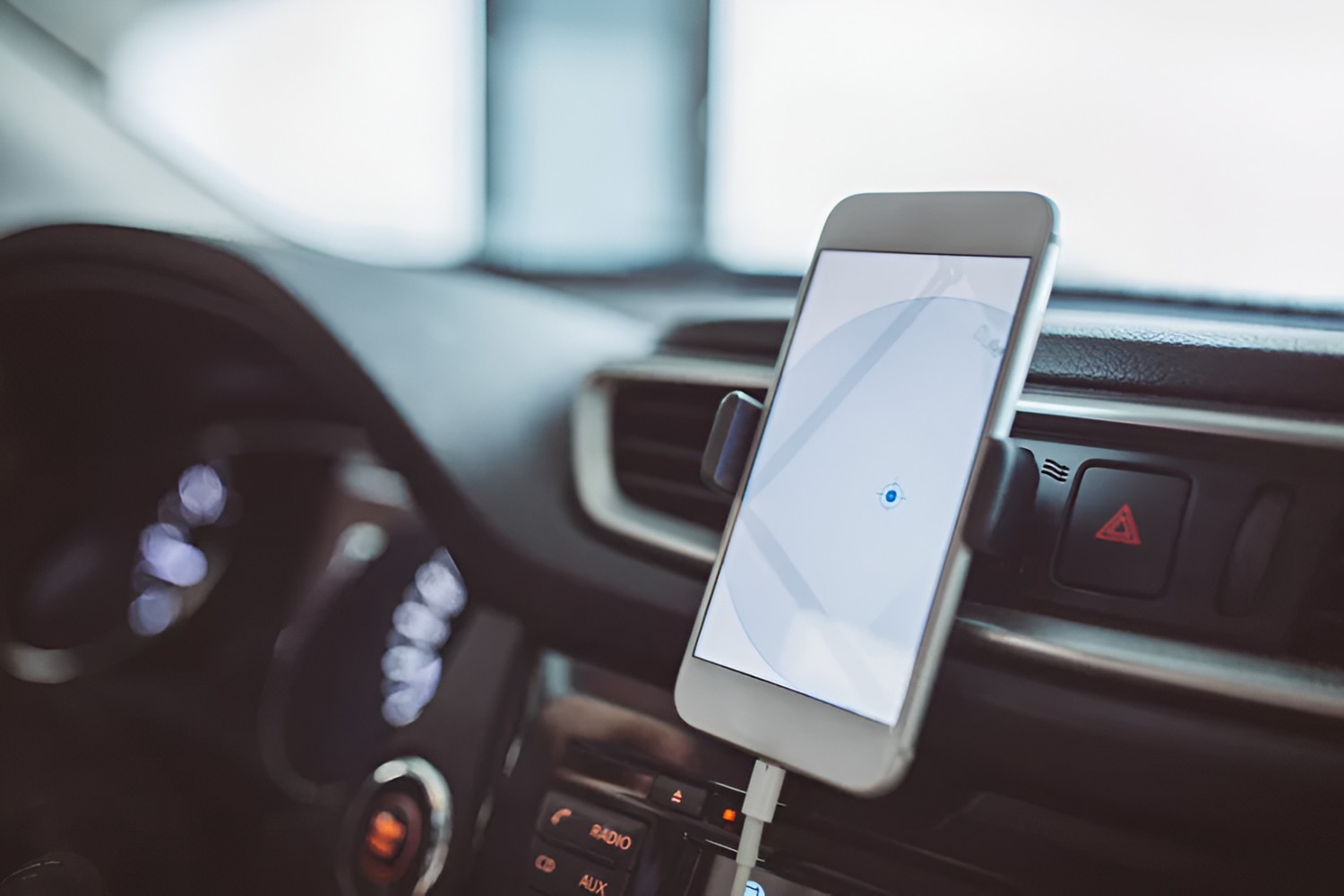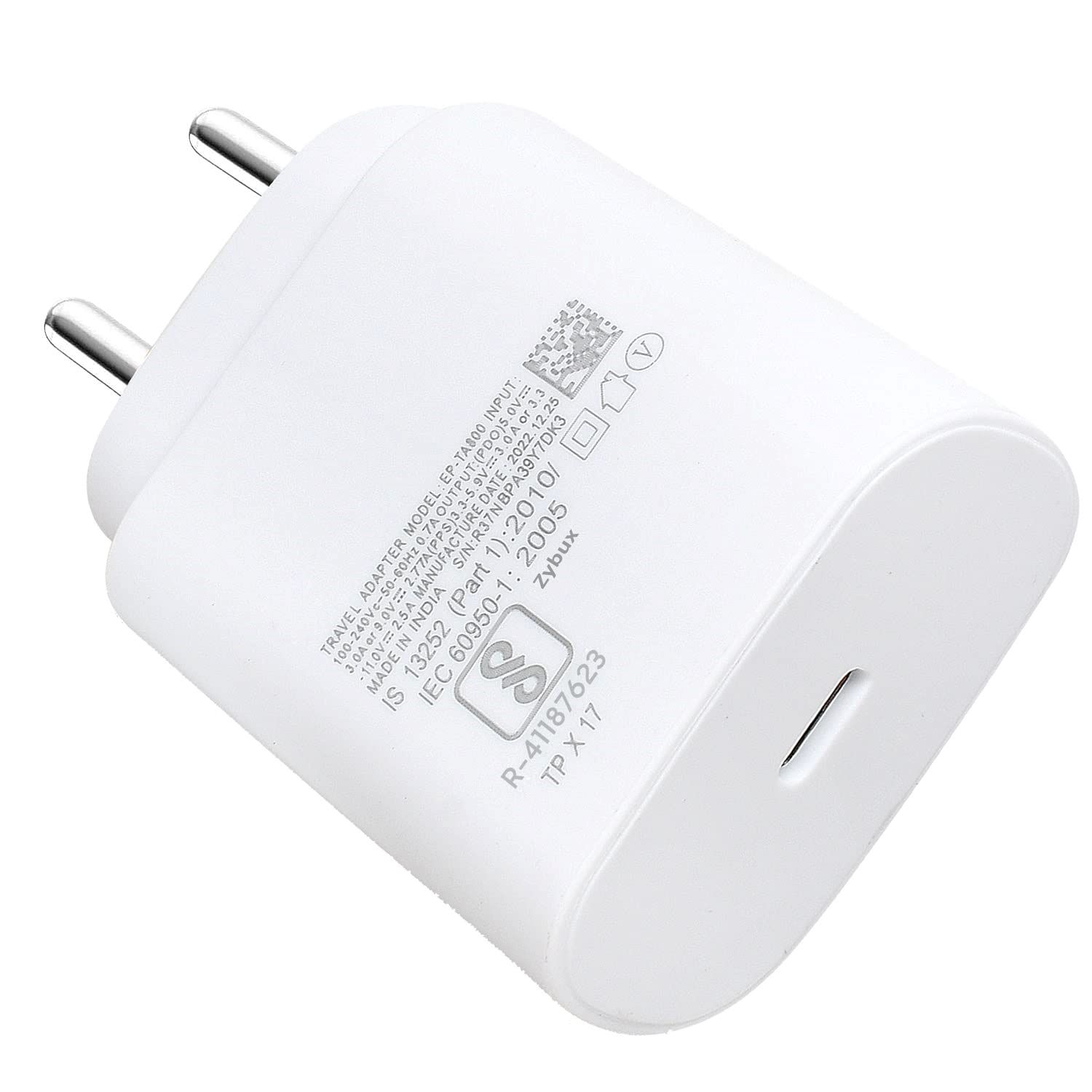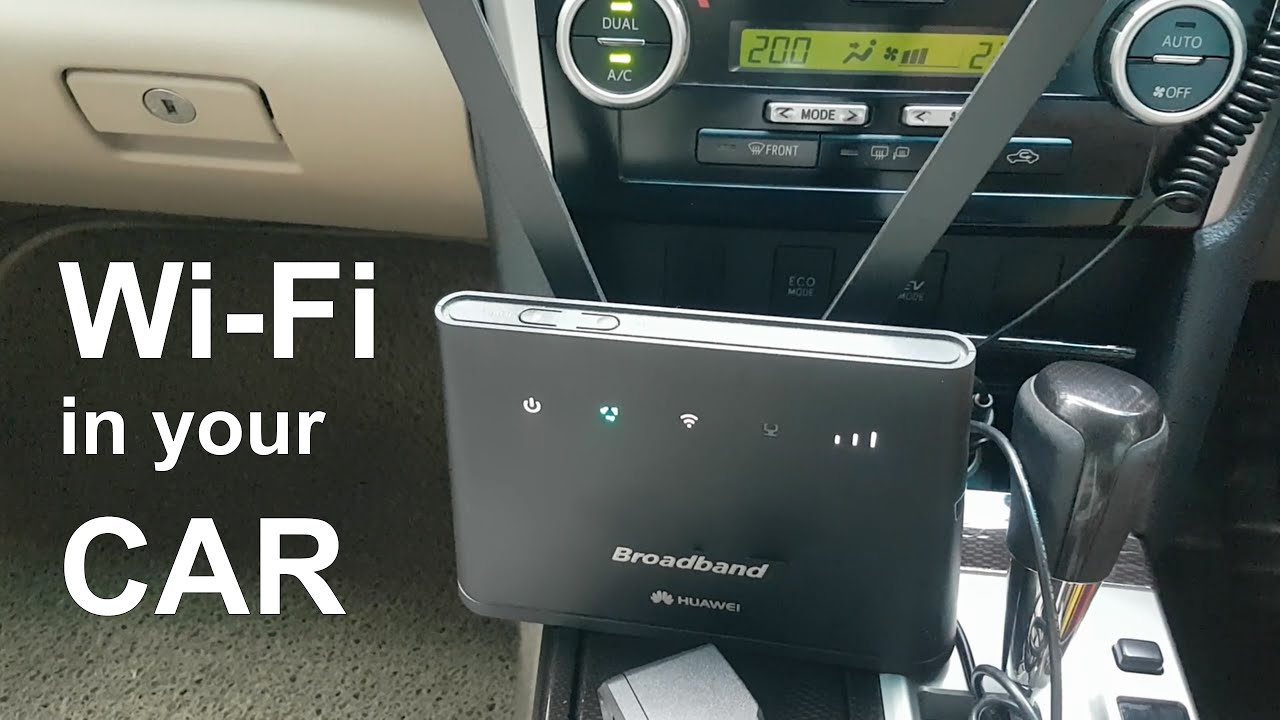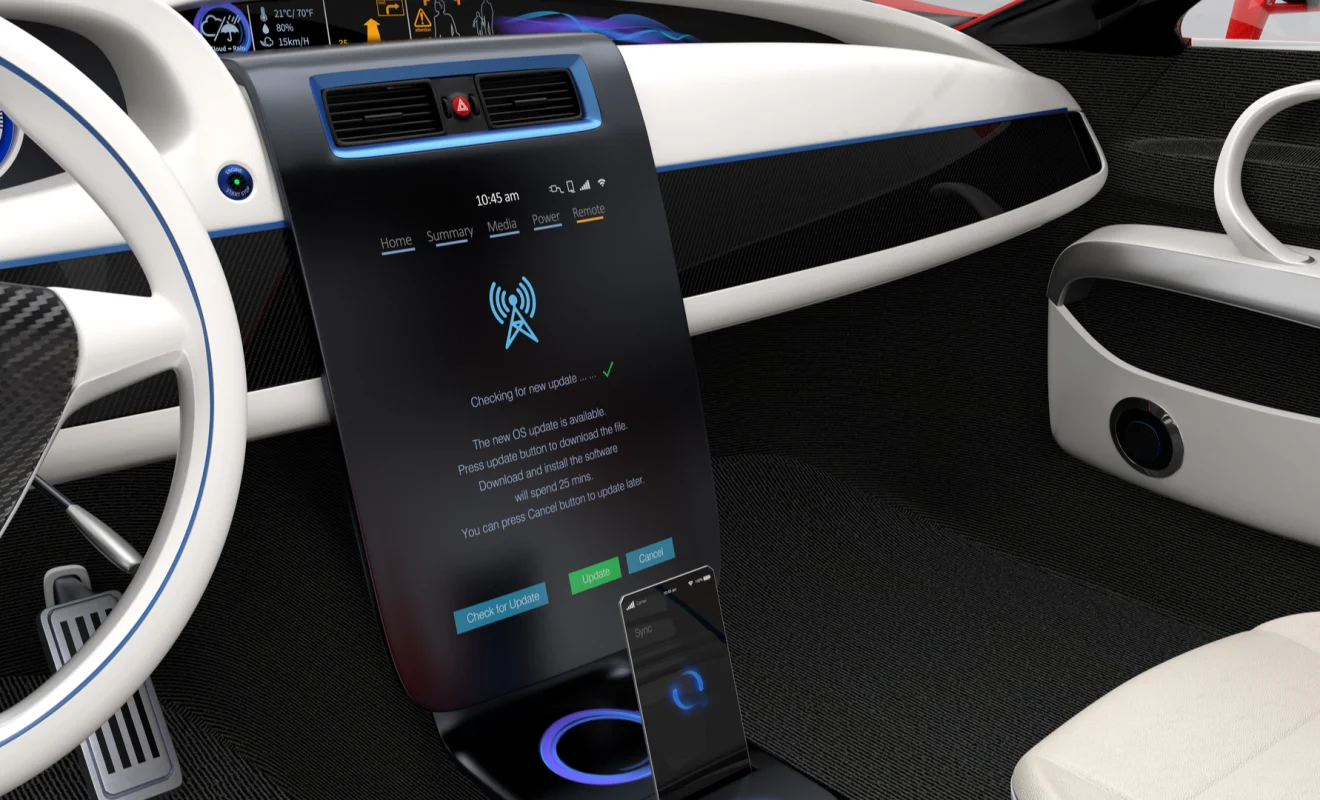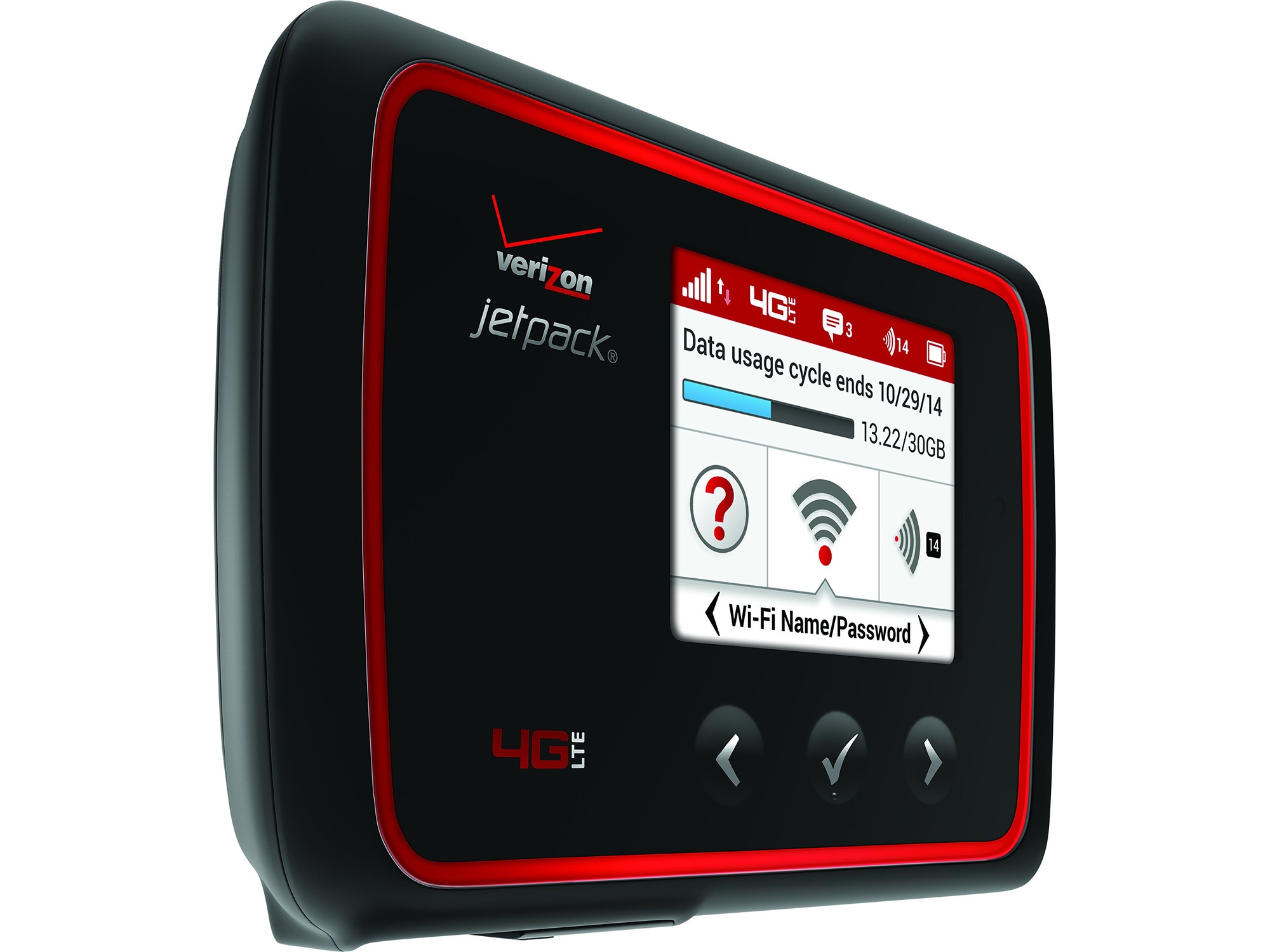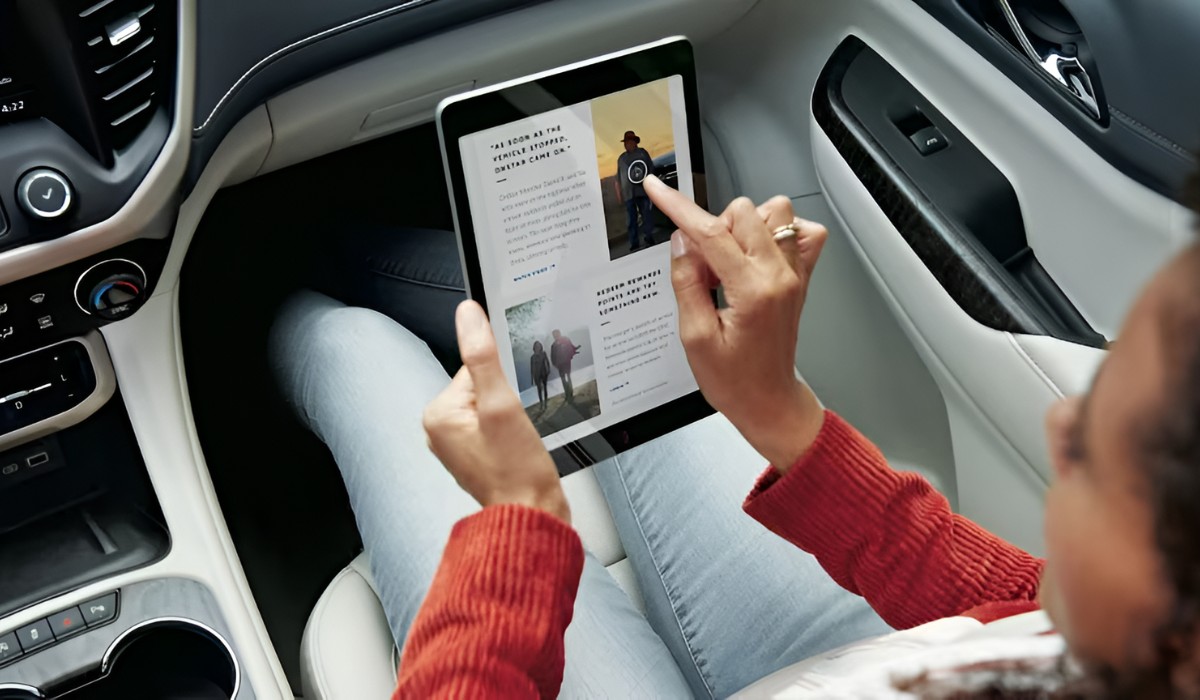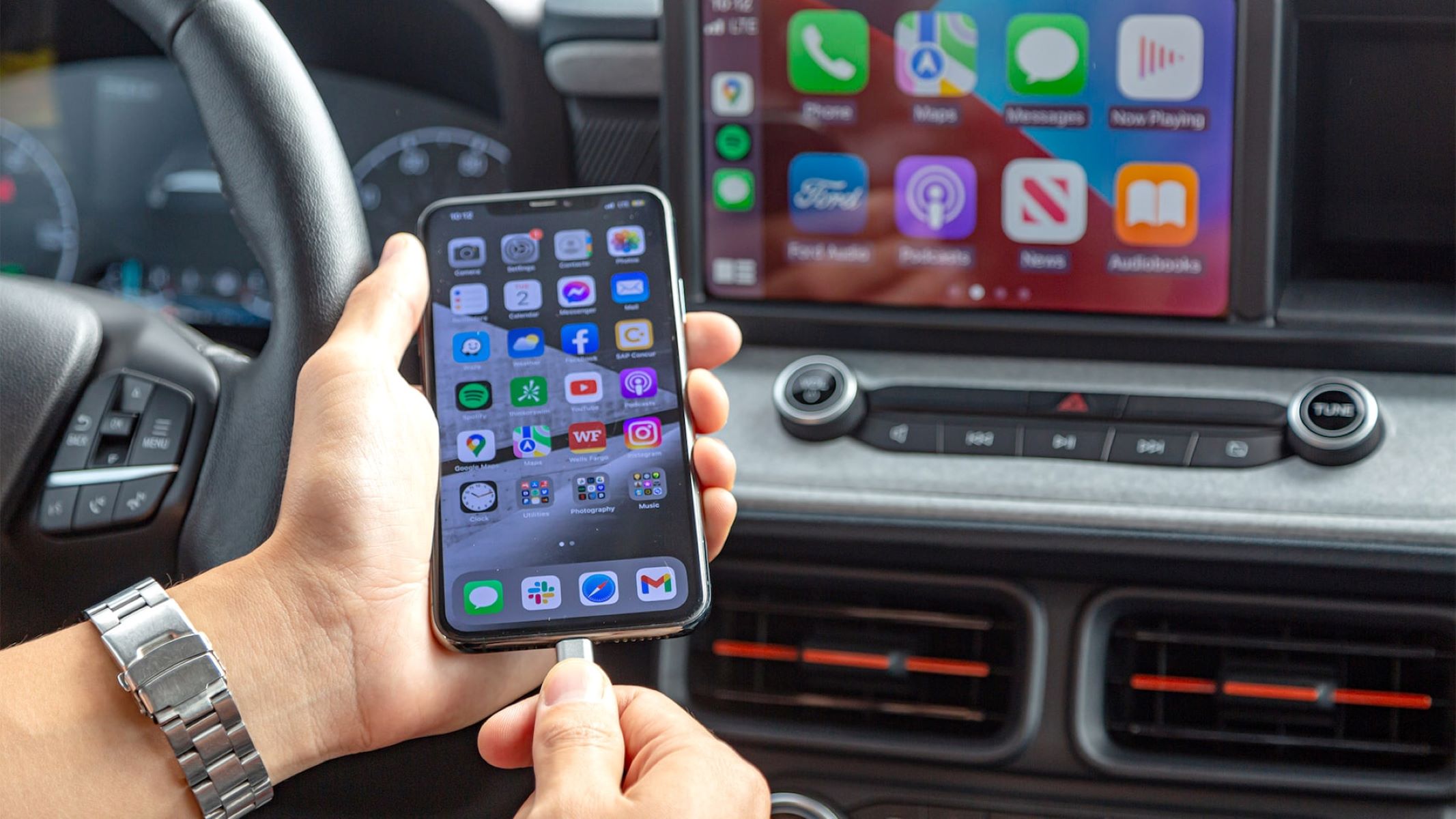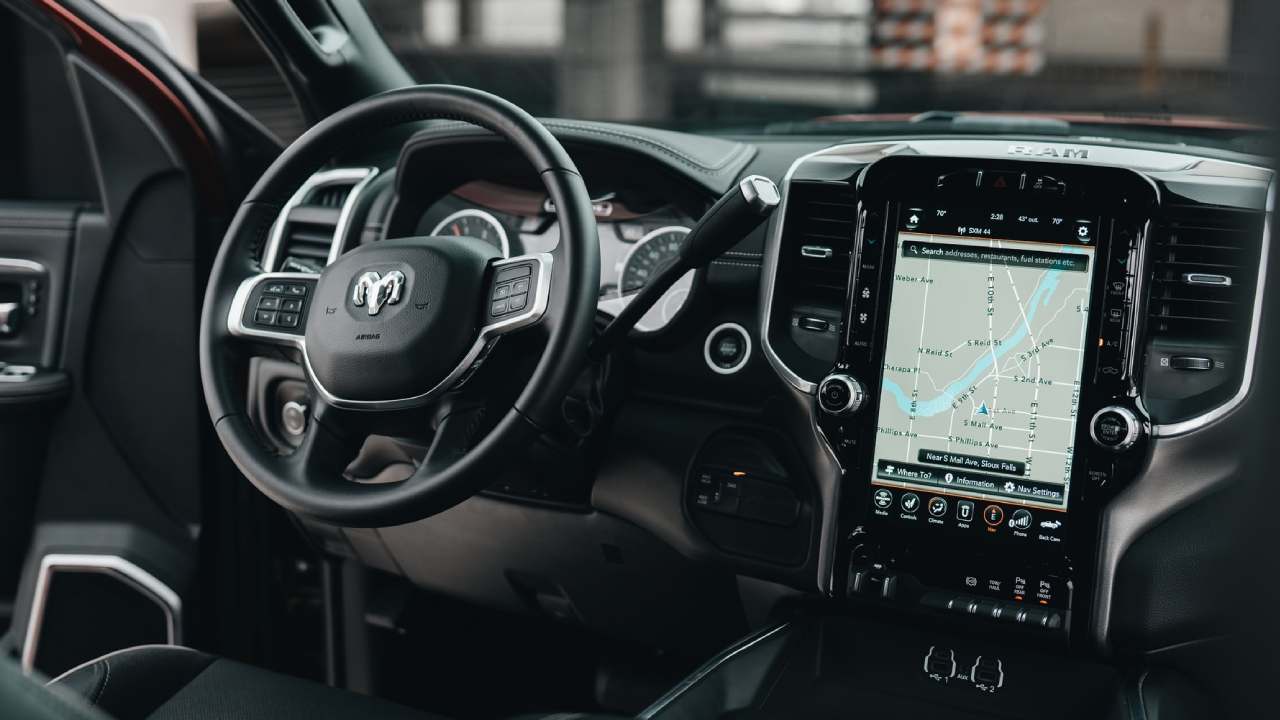Introduction
In today's fast-paced world, staying connected is more important than ever. Whether you're on a road trip, commuting to work, or simply running errands, having access to a reliable internet connection can greatly enhance your overall experience. With the advancement of technology, it's now possible to transform your car into a mobile hotspot, allowing you and your passengers to stay connected while on the go.
Installing an in-car hotspot offers a myriad of benefits, including the ability to stream music, access navigation apps, attend virtual meetings, and entertain passengers during long journeys. Additionally, having a reliable internet connection in your vehicle can provide peace of mind by ensuring that you're always within reach in case of emergencies.
In this comprehensive guide, we will walk you through the step-by-step process of installing an in-car hotspot. By following these instructions, you'll be able to set up a stable and secure internet connection within your vehicle, enhancing your overall driving experience and connectivity.
So, whether you're a tech-savvy individual looking to optimize your car's capabilities or a family seeking to make road trips more enjoyable for everyone, this guide will equip you with the knowledge and skills needed to install an in-car hotspot with ease. Let's dive into the process and get you on the road to seamless connectivity!
Step 1: Gather Necessary Materials
Before embarking on the installation of an in-car hotspot, it's essential to gather all the required materials to ensure a smooth and efficient setup process. Here's a comprehensive list of the necessary items you'll need:
-
In-Car Hotspot Device: Select a reliable and compatible in-car hotspot device that suits your connectivity needs. There are various options available in the market, ranging from dedicated hotspot devices to portable Wi-Fi routers designed specifically for vehicular use. Ensure that the device supports the necessary network bands and offers stable connectivity.
-
Power Adapter: Depending on the specific hotspot device chosen, you may need a power adapter that can be connected to your car's power outlet or USB port. Some hotspot devices come with their own power adapters, while others may require a separate purchase.
-
Mounting Hardware: To securely install the hotspot device in your car, you may need mounting hardware such as brackets, adhesive mounts, or other suitable fixtures. The mounting hardware should be compatible with the design and dimensions of your chosen hotspot device.
-
Mobile Data SIM Card: In order to access the internet through the in-car hotspot, you'll need a mobile data SIM card from a reputable service provider. Ensure that the SIM card is compatible with the hotspot device and offers a suitable data plan for your intended usage.
-
Basic Tools: Keep basic tools such as screwdrivers, pliers, and cable ties handy for the installation process. These tools will be useful for securing the hotspot device and managing any necessary wiring.
-
User Manual: It's important to have the user manual or installation guide provided with the hotspot device readily available. The user manual will contain specific instructions for setting up the device and troubleshooting any potential issues that may arise during installation.
By gathering these necessary materials beforehand, you'll be well-prepared to proceed with the installation of the in-car hotspot. Having all the required items at your disposal will streamline the process and ensure that you can complete the installation without unnecessary interruptions. Now that you have the materials in hand, let's move on to the next step in the installation process.
Step 2: Choose the Right Location
Selecting the optimal location for installing your in-car hotspot device is crucial to ensure reliable connectivity and seamless integration within your vehicle. The chosen placement should take into account factors such as signal strength, accessibility, and safety. Here's a detailed guide to help you make an informed decision:
Consider Signal Strength
When determining the location for your in-car hotspot device, it's essential to prioritize areas with strong and consistent signal reception. Ideally, choose a spot within your vehicle where the signal strength is optimal for uninterrupted internet connectivity. This may involve conducting signal strength tests in different areas of your car to identify the most favorable location.
Accessibility and Convenience
The chosen location should offer easy accessibility for installation and maintenance purposes. Consider areas that allow for straightforward mounting and connection of the hotspot device. Additionally, accessibility to power sources or USB ports should be taken into account to ensure seamless integration with the vehicle's power supply.
Safety and Aesthetics
Prioritize safety when selecting the installation location. Avoid obstructing essential driving components such as airbags, vents, or controls. Opt for locations that do not interfere with the driver's line of sight or pose any safety hazards during vehicle operation. Furthermore, consider the aesthetic aspect to maintain the overall interior appeal of your car while integrating the hotspot device seamlessly.
Factors to Avoid
Avoid locations that are prone to excessive heat, moisture, or physical damage. Areas near the engine, exhaust system, or areas susceptible to water exposure should be avoided to prevent potential damage to the hotspot device. Additionally, refrain from obstructing air circulation or creating potential hazards within the vehicle's interior.
Finalizing the Location
After considering the aforementioned factors, common suitable locations for installing an in-car hotspot device include the center console, rear entertainment system, or the dashboard area. These areas often provide convenient access to power sources, favorable signal reception, and minimal interference with vehicle operations.
By carefully evaluating these considerations, you can confidently choose the right location for installing your in-car hotspot device. The selected location should offer a balance of signal strength, accessibility, safety, and aesthetics, ensuring a seamless integration that enhances your overall in-car connectivity experience. With the location finalized, you're now ready to proceed with the installation process and bring your in-car hotspot to life.
Now that you have selected the optimal location for your in-car hotspot device, let's move on to the next step in the installation process.
Step 3: Install the Hotspot Device
With the optimal location selected, it's time to proceed with the installation of the in-car hotspot device. This step involves securely mounting the hotspot device in the chosen location and ensuring proper integration with your vehicle's interior. Here's a detailed guide to help you install the hotspot device with precision and efficiency.
1. Prepare the Mounting Area
Before installing the hotspot device, ensure that the chosen location is clean and free from any obstructions. Clear the area of any debris, and if necessary, use a gentle cleaning solution to wipe the surface and create an ideal mounting environment.
2. Position the Hotspot Device
Carefully position the hotspot device in the chosen location, ensuring that it aligns with the predetermined placement. If the hotspot device comes with specific mounting brackets or adapters, follow the manufacturer's instructions to securely affix the device in place.
3. Secure the Hotspot Device
Using the appropriate mounting hardware, secure the hotspot device in the chosen location. Whether it involves using adhesive mounts, screws, or other fixtures, ensure that the device is firmly attached and stable within the vehicle's interior. Take into account any specific mounting guidelines provided by the manufacturer to guarantee a secure installation.
4. Cable Management
Once the hotspot device is securely mounted, manage the cables and wiring to maintain a neat and organized installation. Use cable ties or clips to secure the cables and prevent any loose wiring that may cause inconvenience or safety hazards within the vehicle.
5. Verify Stability
After completing the installation, perform a thorough check to verify the stability of the hotspot device. Ensure that it is firmly mounted and does not exhibit any movement or instability that may affect its performance while the vehicle is in motion.
By following these steps, you can effectively install the in-car hotspot device with precision and attention to detail. A securely mounted hotspot device ensures reliable performance and seamless integration within your vehicle's interior, providing uninterrupted connectivity for your on-the-go digital needs.
With the hotspot device successfully installed, the next step involves connecting it to a power source to activate its functionality within your vehicle. Let's proceed to the next step and ensure that the hotspot device is powered and ready to deliver reliable internet connectivity on the road.
Step 4: Connect to Power Source
Once the in-car hotspot device is securely installed in the chosen location, the next crucial step is to connect it to a reliable power source within your vehicle. Establishing a stable power connection is essential to ensure that the hotspot device functions seamlessly and provides uninterrupted internet connectivity while you're on the move. Here's a detailed guide to help you connect the hotspot device to a power source with precision and efficiency.
1. Identify the Power Input
Begin by identifying the specific power input port or connector on the hotspot device. Most in-car hotspot devices are designed to be powered through a standard USB port or a dedicated power input jack. Refer to the user manual or installation guide provided with the device to locate the designated power input.
2. Select the Power Supply
Depending on the type of in-car hotspot device you've chosen, you may have different options for connecting it to a power supply. If the device is equipped with a USB power input, you can utilize the USB port available in your vehicle, often located on the dashboard or within the center console. Alternatively, if the device requires a dedicated power adapter, ensure that you have the compatible adapter for connecting it to your vehicle's power outlet.
3. Connect the Power Cable
Using the appropriate power cable or adapter, connect the hotspot device to the chosen power supply within your vehicle. Ensure that the connection is secure and that the power cable does not obstruct any essential vehicle controls or create any safety hazards within the interior.
4. Power Verification
After connecting the hotspot device to the power source, verify that the device powers on and initiates its startup sequence. Check for any indicator lights or display prompts that confirm the successful power connection. If the device features a battery indicator, ensure that it reflects the charging status to confirm the establishment of the power supply.
5. Cable Management
Once the power connection is established, manage the power cable to maintain a tidy and organized installation. Secure any excess cable length using cable ties or clips to prevent clutter and ensure that the cable does not interfere with the vehicle's interior or occupants.
By following these steps, you can effectively connect the in-car hotspot device to a reliable power source, ensuring that it is powered and ready to deliver consistent internet connectivity during your journeys. With the device successfully connected to the power supply, you're now one step closer to experiencing seamless connectivity within your vehicle.
Now that the hotspot device is powered, the next step involves securing the device and ensuring its stability within the vehicle's interior. Let's proceed to the next step and finalize the installation to guarantee a reliable and secure in-car hotspot setup.
Step 5: Secure the Hotspot Device
Securing the in-car hotspot device is a critical step in the installation process, ensuring that it remains stable and well-integrated within your vehicle's interior. A securely mounted hotspot device not only enhances safety but also contributes to the overall reliability of the internet connectivity it provides. Here's a detailed guide to help you secure the hotspot device with precision and attention to detail.
1. Stability Check
Before proceeding with the securing process, perform a thorough stability check to ensure that the hotspot device is firmly mounted in the chosen location. Verify that the mounting hardware and fixtures are securely fastened, and there is no movement or instability exhibited by the device. This initial assessment is crucial to address any potential issues before proceeding with the securing steps.
2. Additional Fastening
Depending on the mounting method and the design of the hotspot device, consider additional fastening measures to enhance stability. This may involve using supplementary adhesive mounts, securing brackets, or employing compatible fasteners to reinforce the device's attachment to the chosen location. Follow the manufacturer's recommendations for additional fastening to ensure a secure and reliable installation.
3. Vibration Dampening
Incorporate vibration dampening solutions to minimize the impact of vehicle movement on the hotspot device. Utilize vibration-absorbing materials or specialized mounts designed to reduce the transmission of vibrations to the device. By implementing effective vibration dampening techniques, you can prolong the lifespan of the hotspot device and prevent potential damage caused by continuous vehicle motion.
4. Cable Management
Ensure that the cables connected to the hotspot device are managed effectively to prevent interference or hazards within the vehicle's interior. Secure any loose cables using cable ties or clips, routing them in a manner that maintains a neat and organized setup. Proper cable management not only enhances the aesthetic appeal but also contributes to the overall safety and functionality of the in-car hotspot installation.
5. Temperature Considerations
Take into account temperature considerations when securing the hotspot device, especially if the chosen location is exposed to varying temperature ranges. Ensure that the device is positioned away from direct heat sources or areas prone to extreme temperature fluctuations. By considering temperature factors during the securing process, you can safeguard the hotspot device from potential heat-related issues and ensure its optimal performance.
By meticulously following these steps, you can effectively secure the in-car hotspot device within your vehicle's interior, ensuring stability, reliability, and longevity. A securely mounted hotspot device contributes to a seamless and dependable in-car connectivity experience, enhancing your ability to stay connected while on the move. With the hotspot device securely in place, the final step involves testing the connection to verify its functionality and performance.
Step 6: Test the Connection
Once the in-car hotspot device is securely installed and powered, it's essential to conduct a thorough test of the connection to ensure its functionality and performance. Testing the connection involves verifying the hotspot device's ability to provide reliable internet access within the vehicle and assessing its signal strength and stability. Here's a detailed guide to help you test the in-car hotspot connection with precision and attention to detail.
-
Connectivity Verification:
Begin by activating the Wi-Fi network on your mobile devices, such as smartphones, tablets, or laptops, within the proximity of the in-car hotspot. Locate the network name (SSID) associated with the hotspot device and attempt to establish a connection. Verify that the network is discoverable and accessible, allowing devices to connect seamlessly. -
Signal Strength Assessment:
Once connected to the in-car hotspot network, assess the signal strength and stability of the connection. Check the signal bars or strength indicator on your devices to gauge the quality of the connection. Move around within the vehicle to identify areas with optimal signal reception and ensure consistent connectivity throughout the vehicle's interior. -
Internet Access Testing:
After establishing a connection to the in-car hotspot network, test the internet access by browsing websites, streaming media, or accessing online services. Verify that the internet connectivity is stable, with minimal latency and reliable data transfer speeds. Ensure that the hotspot device delivers a seamless online experience, catering to your digital needs while on the move. -
Multi-Device Compatibility:
Evaluate the in-car hotspot's capability to support multiple connected devices simultaneously. Connect multiple devices to the hotspot network and assess its ability to distribute bandwidth effectively, providing consistent internet access to all connected devices without compromising performance. -
Roaming and Coverage Assessment:
If you anticipate using the in-car hotspot during travels across different geographic locations, conduct a coverage assessment by testing the connection in various environments. Evaluate the hotspot device's ability to maintain connectivity while transitioning between urban areas, rural settings, and areas with varying network coverage.
By meticulously conducting these tests, you can ensure that the in-car hotspot connection meets your expectations for reliable and seamless internet access within your vehicle. Address any connectivity issues or signal inconsistencies that may arise during testing, and refer to the device's user manual for troubleshooting guidance if necessary. With the connection successfully tested and verified, you can confidently enjoy the benefits of in-car internet connectivity, enhancing your overall driving experience with seamless digital access.
Now that the in-car hotspot connection has been thoroughly tested and verified, you're ready to embark on your journeys with the assurance of reliable internet access within your vehicle. Whether it's for entertainment, navigation, or staying connected while on the go, the in-car hotspot serves as a valuable asset, enriching your driving experience with seamless connectivity.
Conclusion
In conclusion, the installation of an in-car hotspot offers a transformative enhancement to the driving experience, providing seamless connectivity and digital access while on the move. By following the comprehensive step-by-step guide outlined in this article, you have gained the knowledge and skills needed to install an in-car hotspot with precision and efficiency.
The process began with gathering the necessary materials, ensuring that you have all the essential components and tools required for a successful installation. Selecting the optimal location for the hotspot device was emphasized, considering factors such as signal strength, accessibility, safety, and aesthetics. By carefully choosing the right location, you have set the foundation for reliable and uninterrupted internet connectivity within your vehicle.
The subsequent steps focused on the installation, power connection, and secure mounting of the hotspot device, emphasizing the importance of stability, cable management, and temperature considerations. By meticulously following these steps, you have ensured that the hotspot device is securely integrated into your vehicle's interior, ready to deliver consistent and reliable connectivity.
The final step involved testing the connection, allowing you to verify the functionality, signal strength, and multi-device compatibility of the in-car hotspot. Through thorough testing, you have confirmed that the hotspot device meets your expectations for seamless internet access, catering to your digital needs while on the go.
With the installation process completed and the connection successfully tested, you are now equipped to enjoy the benefits of in-car internet connectivity. Whether it's for streaming music, accessing navigation apps, attending virtual meetings, or keeping passengers entertained during journeys, the in-car hotspot serves as a valuable asset, enhancing your overall driving experience with seamless digital access.
As you embark on your future travels, the in-car hotspot will undoubtedly enrich your connectivity experience, offering a reliable and stable internet connection within the confines of your vehicle. With the ability to stay connected, entertained, and informed while on the road, the in-car hotspot stands as a testament to the seamless integration of technology into the driving experience, ensuring that connectivity knows no bounds.
In essence, the installation of an in-car hotspot not only enhances convenience and entertainment but also contributes to a heightened sense of security and preparedness, ensuring that you are always within reach in an increasingly connected world. Embrace the possibilities of in-car connectivity, and let the in-car hotspot redefine your driving experience with its seamless and reliable digital access.







